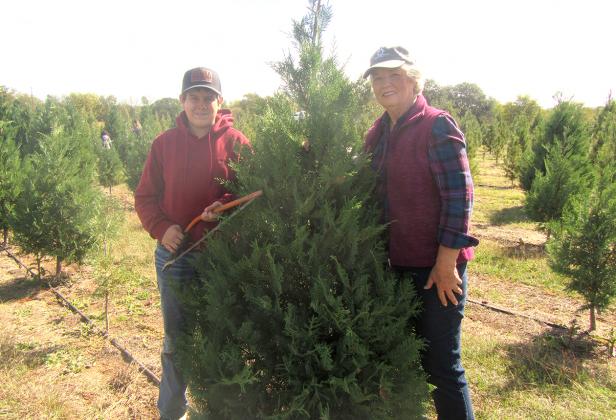The value of real Christmas trees in Texas
Christmas trees have been a tradition in the United States for over a century and today, when most families begin searching for the perfect Christmas tree, it comes down to one question – real or artificial? While there are many pros and cons to having a real or artificial tree during the holiday season, one thing is certain – real Christmas trees add great value to both the national and state economies.
“There’s just something special about having a real Christmas tree around during the holidays,” said Aaron Stottlemyer, Texas A&M Forest Service Forest Resource Analyst. “Not only are they beloved for the authenticity they bring to celebrations, but they add so much value to our economy and benefit the environment.”
When it comes to Christmas tree farms, many might think of northern states, covered in white, glistening snow. Actually, Christmas trees are grown in all 50 states. According to the National Christmas Tree Association, almost 350 million Christmas trees are currently growing on 15,000 tree farms across the country, covering 350,000 acres.
For the Lone Star State, Dr. R. R. Childers was the first on record to plant Christmas trees in 1935 in Jasper, Texas. And since the 1970s, entities such as Texas A&M Forest Service, Texas A&M University and Stephen F. Austin University have been working on growing optimal species in the state to increase production and sales for Christmas tree growers. The most commonly grown trees in Texas are Virginia pine, Afghan pine, eastern redcedar, shortleaf pine, Arizona cypress and Leyland cypress.
These species thrive in Texas soils and tend to be hardy, fast-growing trees. They also contribute to the state’s economy, by providing jobs and income to Texans.
Artificial trees made of PVC plastic became fashionable in the 1980s, but even as they have grown in popularity over the last 40 years, real Christmas tree sales remain higher across the nation. On average, Texas sells over four million real Christmas trees per year, about 12% of the U.S. total. And while you can purchase trees from large retail stores, many tree sales come from local growers.
“Texans can take pride when purchasing real Christmas trees,” said Stottlemyer. “By purchasing real Christmas trees, they are supporting local growers and benefitting rural Texas economies.”
Texas A&M Forest Service recently conducted an economic study showing just how much value the real Christmas tree industry adds to the state. Including total direct impacts and all other ancillary industry activities, in 2020 the Christmas tree industry generated over $800 million and supported nearly 7,000 jobs with a payroll of $260 million.
When contrasted with artificial Christmas trees, the nation and state do not see nearly the economic benefits as provided by real trees, as they are largely manufactured in foreign countries.
“Unlike artificial Christmas trees, the real Christmas tree industry has a continuous cycle of economic benefit for our state,” said Stottlemyer. “There is a significant domestic economic impact from real Christmas trees considering that they are planted, managed, harvested, processed, transported and sold only to start the entire cycle again by planting new seedlings each year.”
How do these numbers rank compared to other states? In 2019, the U.S. Bureau of Labor Statistics estimated the Texas Christmas tree industry ranked second in the U.S. South for average annual employment and wages behind Florida, and fourth nationally after California, Florida and Oregon.
Not only do real Christmas trees add value to our state economy, but they also benefit our environment. Much like forests, Christmas trees growing on tree farms reduce soil erosion, improve water quality and provide habitat for wildlife.
Like other trees, Christmas trees also add value to our lives by sequestering carbon, producing oxygen and cleaning the air we breathe. Similar to having plants or fresh cut flowers around, real trees also help boost energy and mood and decrease mental fatigue – which can be much needed during the rush of the holiday season.
“Purchasing real Christmas trees is purchasing a renewable resource,” said Stottlemyer. “Real trees provide numerous environmental benefits and are a true green option to enjoying the holidays.”
Real Christmas trees are both renewable and recyclable. Many communities provide opportunities to recycle trees. Trees can easily be mulched to be used in yards, around the bases of trees or in gardens to help prevent soil erosion and compaction. Trees can also create habitat for wildlife or fish if placed outdoors or in ponds.
Real Christmas trees add real value to the Texas environment and economy, and to Texans’ health, jobs and local businesses.
To read the full Texas A&M Forest Service report on Christmas tree industry economic contribution, visit https://bit.ly/3avT8GB.

